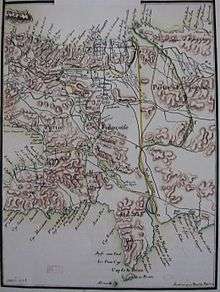Treaty of Aranjuez (1777)
The Treaty of Aranjuez was signed on June 3, 1777, between France and Spain. Based on the terms of the treaty, the two countries agreed to define the border of their respective colonies on the island of Santo Domingo in the Caribbean Sea which they shared ownership of. Spain made substantial gains in the upper Artibonite Valley in middle section of the island. The new border was to be marked by border stones. It was signed at Aranjuez Palace near Madrid in Spain. It was one of a number of diplomatic agreements signed at the palace in the eighteenth century and should not be confused with the 1779 Treaty of Aranjuez between the two states which led to Spain's entry into the American War of Independence.

Aftermath
The northernmost and southernmost part of the international border between Haiti and the Dominican Republic still conforms to the boundaries between French and Spanish colonies agreed to in the Treaty of Aranjuez. However, in the 20th century, the middle portion of the boundary was changed to make it closer to a straight north–south line and thereby transferred a large portion of Hispaniola from the Dominican Republic to Haiti.[1] An original boundary stone is on display in the Museo de las Casas Reales, Santo Domingo.
See also
Notes
- dead link] Archived October 20, 2009, at the Wayback Machine
External links
- Santo Domingo: A Country With A Future
- The Louverture Project: Treaty of Aranjuez